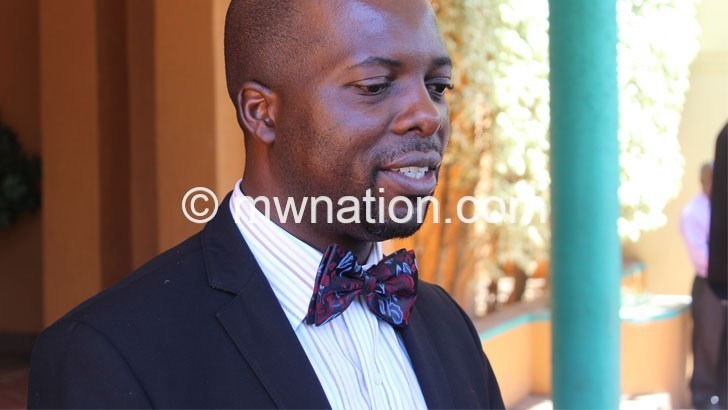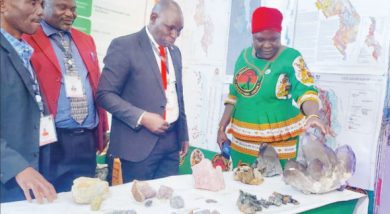Rethinking Tactics To Overcome SDGs Obstacles
Seven years after adopting the Sustainable Development Goals (SDGs), also known as the Global Goals, Malawi has a different story to tell the world, a story punctuated with mixed fortunes on how the country is faring in meeting the set targets.
Malawi does not operate in a vacuum. The country-whose economy is only worth $10.9 billion (about K8.9 trillion)-is part of the global village, despite ranked one of the poorest countries in the world, with a per-capita income of only about $600.

Malawi ratified and adopted the 2030 Agenda for Sustainable Development in September 2015 along with 194 other member states of the United Nations (UN).
Since 2015, the country has deployed a myriad of strategies, approaches, masterplans, policies, methodologies and tactics in order to win the SDGs challenge come 2030.However, while progress in some areas in Malawi is encouraging, overall, the country urgently needs to redouble its efforts if it is to achieve the SDGs by 2030.
The distance covered so far since the adoption of the time-bound goals and targets is muddy and murky.
It simply requires a great deal of rethinking tactics in order for Malawi to overcome SDGs stumbling blocks.
The SDGs provide time-framed targets in key sectors—including health, education, employment, energy, infrastructure, and the environment—for all nations including Malawi to achieve.
The 17 SDGs, agreed upon in 2015 by world leaders, are designed to create a better, fairer, world by 2030 – ending poverty, urgently addressing climate change and ending inequality.

Malawi domesticated the SDGs in its current national development plan, the Malawi Growth and Development Strategy III (MGDS111) which run from 2017 to 2022, to accelerate the pace of economic growth and wealth creation for the citizens of Malawi.
Reflecting the Malawi’s SDGs footsteps
In Malawi, progress so far on the implementation of the SDGs has been uneven across goals, and targets, according to a flurry of literature this reporter has flipped through.
In fact, comparing to other countries, Malawi is lagging behind in so many aspects and needs to pull up her socks if the country is to achieve most of the set goals and targets. Otherwise, the country will be left way behind by other African countries in a tight race whose main referee or umpire is none other than the giant UN itself.
According to the Africa SDG Index and Dashboard 2019, the best-ranked country, Mauritius, had an aggregate score of 66.19—implying that the country is, on average, 66 percent of the way to the best possible outcome across the 17 SDGs.
Other top performers include Botswana, Ghana, and Rwanda.
However, according to Foresight 2020-an international bi-monthly journal concerned with the study of the future-18 countries (of 46 total) in sub-Saharan Africa are, on average, less than 50 percent on the way towards meeting the best possible outcome on all SDGs.
Overall, at the indicator level, these countries are off track on most of the SDGs, reiterating the urgency for countries and global partners to jointly accelerate reforms and implementation.
Domestically, the country needs to panel-beat its systems while re-invigorating critical institutions that are at the core of playing noble tasks that are crucial to meeting the SDGs.This is because, overall, as it stands, Malawi is bound to miss most of the set goals and targets, unless Capital Hill as well as Malawi’s global partners move with a sense of urgency to jointly accelerate reforms and implementation towards achieving the goals.
Fresh statistics show that most of the goals are increasingly out of reach. For example, SDG six aims for universal access to safe and affordable drinking water. However, as it stands, only about five percent of Malawians use water from protected wells, according to the country’s most recent census.
Similarly, SDG 1 sets a goal of ending extreme poverty by 2030. The goal also appears to be an illusion for Malawi as 51 percent of the population is poor and 20 percent extremely poor, according to the National Statistical Office (NSO) through its Integrated Household Survey (HIS) number four of 2017.
The proportion of the population below the international poverty line of $1.90 per day is high estimated at 71.4 percent.
A lecture of economics at the University of Malawi Gowokani Chijere-Chirwa observes that Malawi is experiencing insufficient long-term progress on, among others, SDG 1 (Eradicating Poverty and ending all its forms), with many of its targets being among those showing negative trend.
And a maiden Voluntary National Review Report (VNRR) for 2020 exposes even more weakness as Malawi wobbles through while sweating profusely in a journey to meeting the ambitious SDGs.
After five years of SDGs implementation, Malawi is making significant progress on 29 of the 169 targets (17 percent). It is making moderate progress with performance gaps on 59 of the targets (35 percent) and shows insufficient to no policy change or otherwise poor performance on 81 of the targets (48 percent).
Some silver-lining
Tonse Alliance-led government has repeatedly stated that it is committed to making sure that the implementation of the Agenda 2030 and the Sustainable Development Goals (SDGs) is effectively pursued in order to improve the livelihoods of all Malawians and contribute to the global social economic development.
National Planning Commission (NPC) director general Thomas Munthali says government has put in place mechanisms to ensure that national development plans are being implemented to realise the 2030 agenda as specified in the 17 sustainable development goals which was agreed in September 2015.
“The principle of ‘Leaving No One Behind’ stands front and centre in Malawi’s drive to bring the fruits of development to all Malawians, whether child, woman and man regardless of geographical location,” says Munthali.
Corroborating the tune, Principal Secretary in the Ministry of Economic Planning and Development Winford Masanjala makes emphasis that government has put in place a governance structure for the implementation of the SDGs so that all initiatives towards the achievement of the goals are well guided and coordinated among various stakeholders.
Of the 17 goals, Malawi puts more focus on 7 goals.These are health (Goal 3), education (Goal 4), gender (Goal 5), clean water and sanitation (6), sustainable cities (Goal 11), climate change (Goal 13) and strong institutions (Goal 16).
These goals are perceived as critical for Malawi to realise the objectives of Agenda 2030 in the decade of action; but also to showcase the challenges the country is facing at national level, while recognising the immense significance of all other SDGs in the process.
The 29 targets on which the Malawi is making significant progress include SDG 3 (Good Health and Well-Being), Target 3.2, under-five mortality rates are significantly declining and likely to be met; SDG 4 (Education for All), Target 4.5, gender parity in primary schools is already equal to parity, Net Enrolment in Primary Schools is close to target.
Targets on which the country is making moderate progress includes SDG 2 (Zero Hunger), despite significant progress through reduction and turning the curve on child malnutrition indicators (Stunting, Underweight, and Wasting).
Recently, the UN’s Joint SDG Fund recently selected Malawi and three other countries for a financial boost. In March it allocated $41 million to the four countries to accelerate their SDG programs.
According to the UN, the allocation to Malawi focuses on boosting financing for small and mid-sized enterprises (SMEs), stressing that such funding “will reduce poverty, hunger and inequality by creating jobs and supporting small businesses in the country’s severely under-capitalised agricultural sector.”
Such a UN approach has already earned kudos from local commentators who think the tactic could help boost Malawi’s agricultural SMEs, according to Bright Sibale, a consultant and researcher in rural and social development.
“Any project that supports SMEs will promote growth,” he says. “But the UN should ensure that overall conditions are favourable for SMEs and that the project includes skills development for SMEs.”
Looking ahead: Time for action is now
Just like in many other countries, gains in health and education show promise, but gaps linger, infrastructure and service delivery need some more aggressive pressing, poverty and hunger is still persisting, and is being exacerbated by climate change.
Looking ahead, Malawi must tackle the SDGs head-on with a comprehensive and interconnected approach to effectively optimize resources, says international development expert Peter Yakobe.
He says: “The domestication process must thus go beyond just mainstreaming the SDGs into national plans; it must now strive to contextualize both the target and its indicators to local socio-economic realities.”
According to Yakobe, Malawi’s strategy must be changed from the conventional present-to-future to future to-present planning, cascading from 2030 backward.
While Malawi should remain committed to working with its development partners over the next decade and beyond, achieving the SDGs should also be deemed as Malawi’s own primary responsibility.
Recently, Malawi launched a Domestic Resource Mobilization Strategy (DRMS), a blue-print which many economic experts believe will help prop up the glaring financing needs of the SDGs, Agenda 2063 as well as domestic national development plans, chief being the Malawi Vision 2063.
END-





